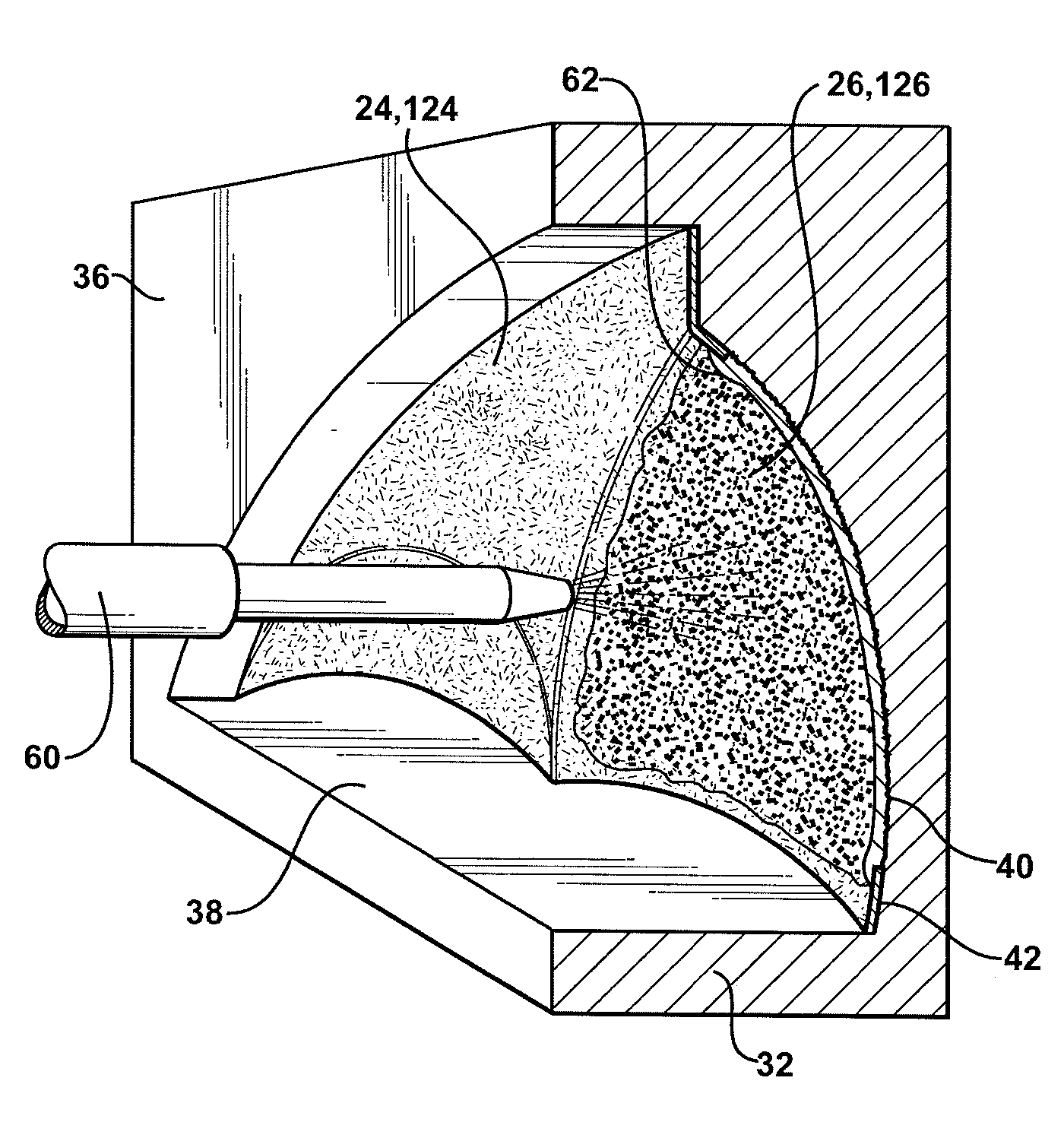Method of making an article
a technology of making an article and a mask is applied in the field of making an article, which can solve the problems of limited use of masks in ferrous metallic molds, painting and contaminating the first region, and affecting the safety of pedestrians/occupants, etc., and achieves the effects of simple and cost-effective, easy removal, and simple control of pressur
- Summary
- Abstract
- Description
- Claims
- Application Information
AI Technical Summary
Benefits of technology
Problems solved by technology
Method used
Image
Examples
Embodiment Construction
[0028] Referring to the Figures, wherein like numerals indicate like parts throughout the several views, an article made in accordance with a method of the present invention is shown generally at 20.
[0029] In one embodiment, as shown in FIG. 1, the article 20 is a skin for covering an instrument panel 22 of a vehicle. While the article 20 is shown as a skin for covering the instrument panel 22, it is to be appreciated that in other embodiments, the article 20 may be further defined as at least one of a headrest, a trim panel, a seat, a pillar trim panel, an instrument panel, a door panel, and an armrest.
[0030] Referring to FIGS. 2-6, the article 20 includes a first layer 24, 124 and a second layer 26, 126. In one embodiment, as shown in FIGS. 2-5, the first layer 24, 124 and the second layer 26, 126 are adjacent to each other, i.e. the layers are substantially co-planar. In one embodiment, the article 20 may have a distinct line between the first layer 24, 124 and the second layer...
PUM
| Property | Measurement | Unit |
|---|---|---|
| pressure | aaaaa | aaaaa |
| elastomeric | aaaaa | aaaaa |
| composition | aaaaa | aaaaa |
Abstract
Description
Claims
Application Information
 Login to View More
Login to View More - R&D
- Intellectual Property
- Life Sciences
- Materials
- Tech Scout
- Unparalleled Data Quality
- Higher Quality Content
- 60% Fewer Hallucinations
Browse by: Latest US Patents, China's latest patents, Technical Efficacy Thesaurus, Application Domain, Technology Topic, Popular Technical Reports.
© 2025 PatSnap. All rights reserved.Legal|Privacy policy|Modern Slavery Act Transparency Statement|Sitemap|About US| Contact US: help@patsnap.com



